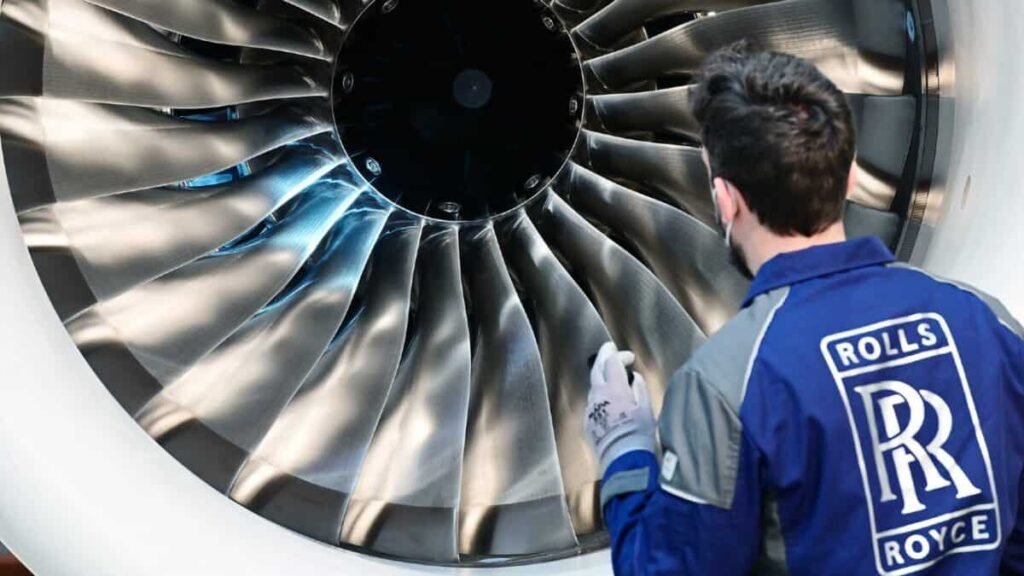Image source: Rolls-Royce plc
Those looking for passive income opportunities have plenty of stocks to choose from. For example, the yield on the FTSE 100 is currently (2 October) 3.34%. Members of the index are expected to pay £79.4bn in dividends in 2025. Look closer and the top 10 are presently offering an average return of 6.8%. Of course, there are no guarantees this will continue indefinitely.
Generous dividends are only possible if a company’s bottom line is healthy. And for a payout to steadily increase over time, it’s necessary for a company to have consistent earnings growth.
One business that’s doing particularly well at the moment is Rolls-Royce Holdings (LSE:RR.). For 2025, analysts are expecting it to report pre-tax earnings of £2.74bn. Earnings per share (EPS) of 24.8p is predicted. This is forecast to rise to 37.6p by 2028. For context, in 2020, it reported a loss before tax of £2.9bn.
Such a turnaround has led to a remarkable recovery in the group’s share price. Due to the pandemic, the business nearly went bust. Today, it’s valued at just over £100bn.
With impressive earnings — and annual EPS growth of 16.7% expected over the next four years — the group would appear to be a perfect candidate for paying a generous dividend.
In fact, the opposite is true.
Some number crunching
Based on a current share price of £11.75, the forward (2025-2028) yield ranges between 0.7% and 1.1%. Clearly, there are better passive income opportunities elsewhere.
But it’s not as if the group’s being deliberately mean. If the forecasts are right, it will return around a third of its profit each year to shareholders in dividends. This isn’t out of kilter with other FTSE 100 companies.
| Year | Forecast dividend (pence per share) | Forecast yield (%) | % of earnings paid in dividends |
|---|---|---|---|
| 2025 | 8.2 | 0.7 | 33.0 |
| 2026 | 10.3 | 0.9 | 34.9 |
| 2027 | 11.6 | 1.0 | 34.8 |
| 2028 | 13.1 | 1.1 | 34.8 |
But as a result of the pandemic, Rolls-Royce had to undertake a life-saving rights issue. At 31 December 2019, it had 1.931bn shares in issue. Today, that figure is 8.444bn. This will shrink as the company is part-way through a £1bn share buyback programme. But I doubt the group will ever be looked upon as a dividend share again.
However, there are other reasons why the stock could be considered.
Right place, right time
Its civil aviation division is benefitting from an increase in air travel. The group’s defence business is growing on the back of a more dangerous world. And data centres are helping its power systems unit. By the start of the next decade, its factory-built nuclear power stations could add another important revenue stream. And The Wall Street Journal is reporting that talks have been held with Boeing about fitting the group’s engines to its next-generation single-aisle aeroplane.
But there are potential challenges. With such rapid earnings growth there’s always a risk that investors will react badly if there’s a sign of a slowdown, even if it’s temporary. And its high earnings multiple could be an indication that some of the anticipated growth has already been factored in to its current share price. And as we have seen, income investors are unlikely to be satisfied.
However, I think the stock still offers some value. The group’s boss certainly thinks so. He reckons it could become the UK’s most valuable listed company. If this was achieved today, its share price would be 80% higher.
On balance, I think Rolls-Royce is a stock worthy of consideration by long-term investors.

